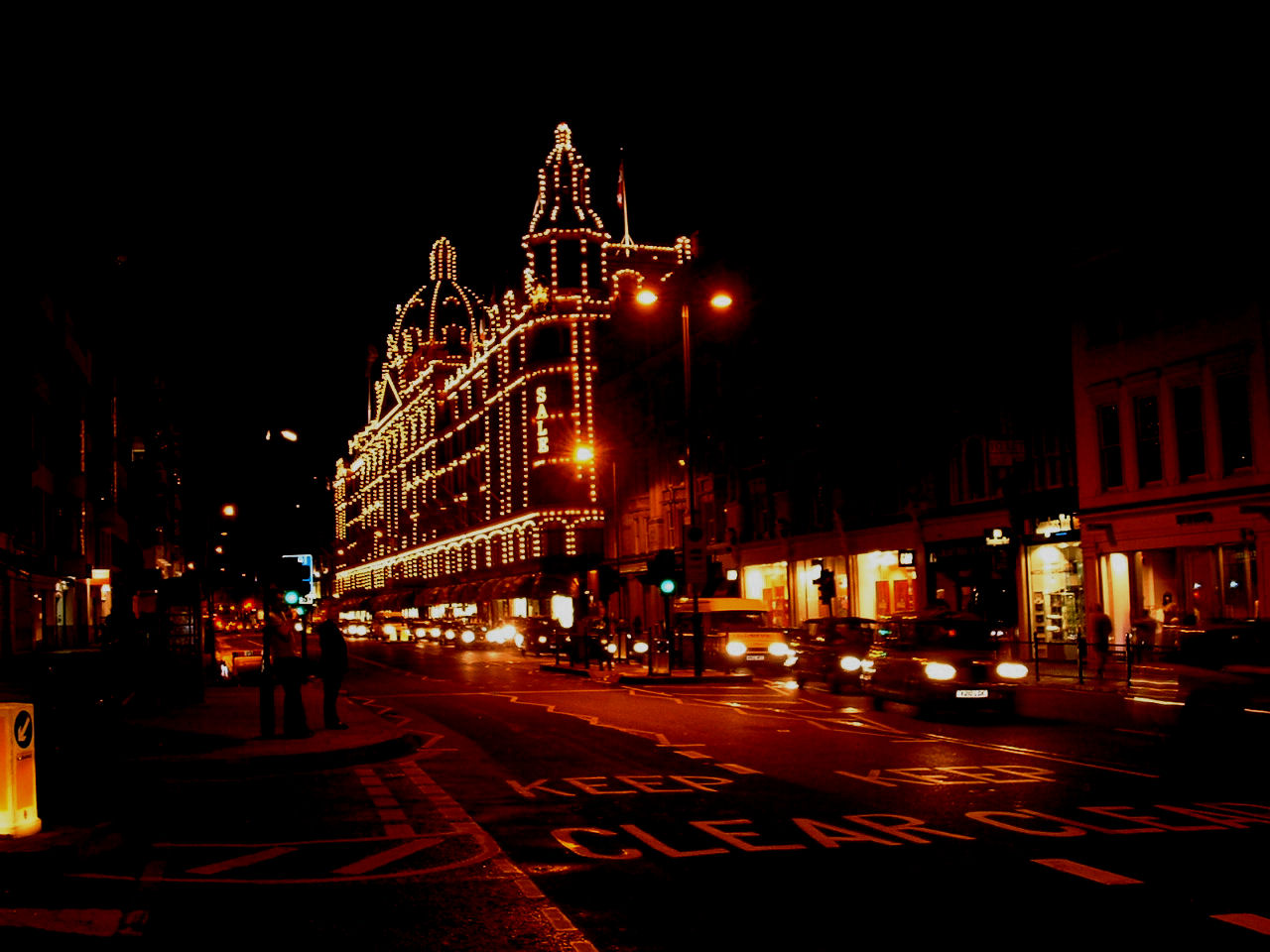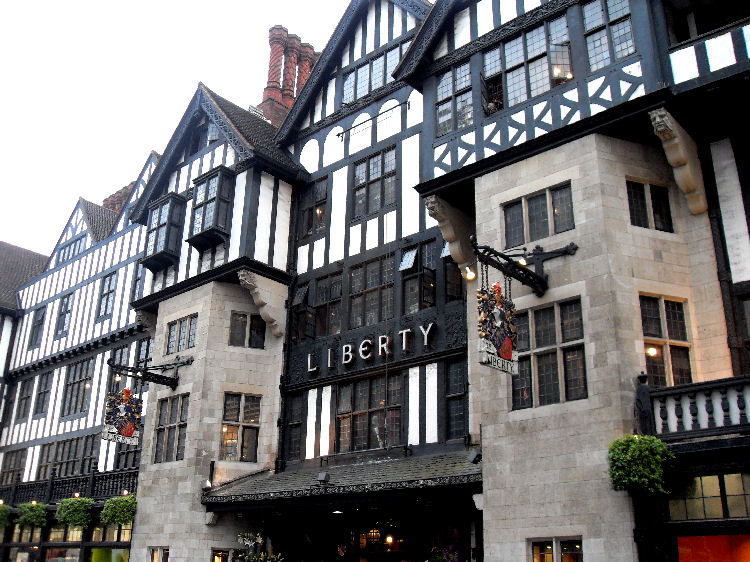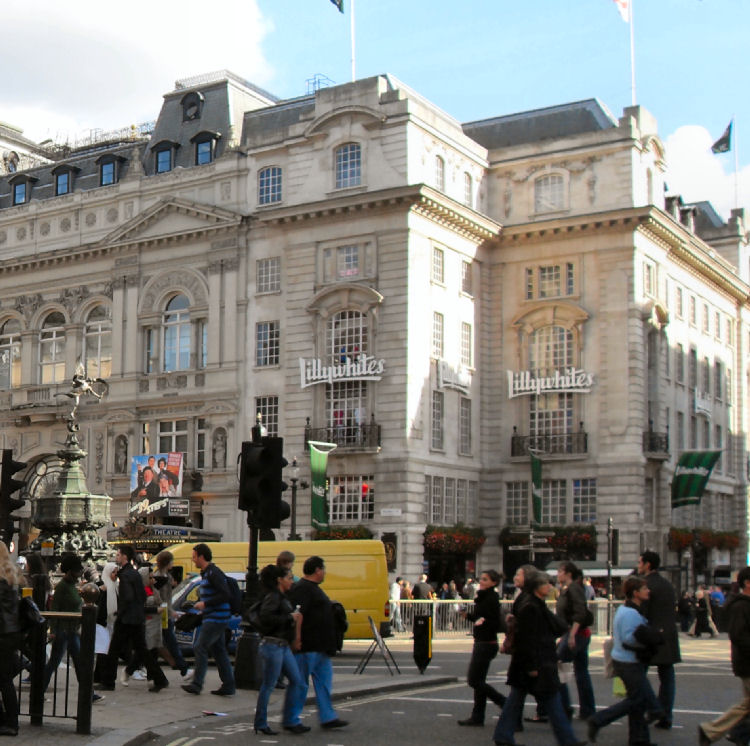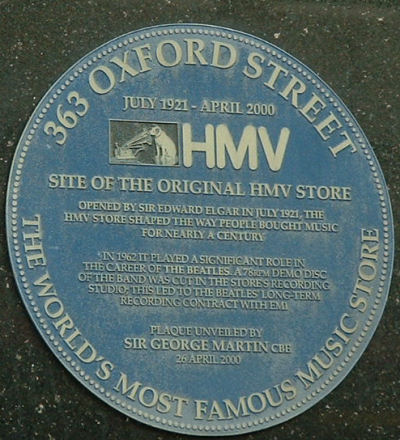London Stores
 Harrods of Knightsbridge
Harrods of Knightsbridge is the most famous store in the world, although it began life in the East End of London during 1834. Founded by Charles Henry Harrod, who set up his wholesale grocery shop in Stepney, specialising in tea. During 1849, to capitalise on the Great Exhibition of London of 1851, which was held in Hyde Park, Harrod took over a small shop in Knightsbridge on the site of the current store. From humble beginnings employing just two assistants and a messenger, Harrods son Charles built up the store taking over the adjoining buildings and employing one hundred staff by 1880.
The store's fortunes were to change in 1883 when it burnt to the ground just before Christmas. With their good name at stake, Harrods fulfilled all the Christmas deliveries on time, making a record profit for the store that year. Harrods was sold by the family in 1889 and became a public company. The new Managing Director Richard Burbidge introduced the worlds first escalator installed in 1898 they had to give brandy to the nervous customers when they reached the top. The Harrods building was designed by Stevens and Munt and is in terra-cotta stone to tone in with the fashionable Hans Town and Cadogan Square which are south of it. Harrods is the world’s most luxurious department store on every visitors must do list.
 Arthur Lasenby Liberty
Arthur Lasenby Liberty was born in Buckinghamshire in 1843, and as a young man worked for the retail shop of Messers Farmer and Rogers in Regent Street. At the age of thirty he started his own small shop at 218a Regent Street, and then eighteen months later he could afford to buy the small shop next door, where he began selling unusual fabrics and ornaments from the Far East and Japan.
Over the next few years with his business growing he was able to purchase some of the neighbouring properties, selling his original fabrics and furnishings of the Arts and Crafts and Art Nouveau periods, produced exclusively by many leading English designers. Liberty decided to distinguish his store from all the other Regent Street buildings by including a life-size frieze of figures that gaze down onto the street below.
Also included on the front of the building are four Japanese "Iohan", disciples of Buddha, which sits on a ledge on the first floor to either side of the main entrance. The more famous of the two buildings is the Tudor shop. The Tudor shop was built in 1924 from the timbers of two ships: HMS Impregnable and HMS Hindustan. The frontage at Great Marlborough is the same length as the Hindustan. Arthur Liberty wanted to create the feeling that you were walking around your own home when you came to his store, so each room was surrounded by smaller rooms to create a homely feel. Many of the rooms had fireplaces and some still exist today. Sadly the founder of Liberty, Arthur Lasenby Liberty, died in 1917, seven years before the completion of his two magnificent shops. But the tradition continued.

Tudor Ship weather vane on Liberty's roof top.
John Lewis, born in 1836, was an apprentice to a draper in Wells, from where he moved to Bridgewater and then to Liverpool. Upon a sudden impulse, he borrowed a sovereign from a Frenchman and came to London.
John Lewis began working for Peter Robinson as a buyer and was just turned 28 when he decided to lease a shop in Oxford Street, where he sold ribbons and haberdashery and by 1870, he expanded into linens. He knew how to buy well and was scrupulously honest, quickly gaining a reputation for good value.
Over the next 20 years, the shop grew considerably. First by leasing buildings in Hollies Street, and then by the acquisition of more shops in Oxford Street, and finally, in 1895, he purchase Cavendish Buildings.
In 1905, he purchased the ailing Peter Jones of Sloane Square and put his son Spedan in charge. In 1928, at the age of 92, John Lewis died and, as his other son Oswald had withdrawn from the business in 1926, the management of both shops was run entirely by Spedan Lewis.
Spedan Lewis believed that the profits from a company should be shared with the workers who had produced them. It was with this partnership of the workforce, that he had succeeded in making a success of Peter Jones.
When he inherited the Oxford Street shop, he extended his scheme. He set up a structure whereby workers were Partners, and in 1929 the John Lewis Partnership was born.
He extended the Oxford Street premises in 1928 taking over a property on the other side of Holles Street and connected it to the existing building by an underground tunnel. During the 1930s, the shop continued to flourish, but on Wednesday 18 September 1940, disaster struck. An oil bomb fell on the West House, and the fire, fanned by a strong wind, crossed to the East House.
It took a day and a half to put the fire out, despite all the damage, the shop reopened for business within a few weeks. It was not until 1954 that any rebuilding took place and then it was decided to rebuild the premises onto one site. On 17 October 1960, the new John Lewis store in Oxford Street was officially opened and looked at the outside much the same as it looks today.
Fortnum and Mason
During the reign of Queen Anne in 1707, William Fortnum became one of her Majesty's footmen. Every evening Fortnum would replace the old candles with new ones and
he would duly sell the old candles to the Queens ladies-in-waiting for a nice little profit, which helped him with his sideline of selling groceries.

Still lighting the way in Piccadilly
At the same time enter Mr Hugh Mason, who was the landlord to the grocery business. William enticed Mason into the running of the shop and called it
Fortnum and Mason, trading in Piccadilly at the same spot where they are today.
In 1761 William’s grandson Charles Fortnum, who was in the service of Queen Charlotte, increased the business with delicacies such as game, in aspic jelly embellished prawns and lobsters.
All through the Napoleonic wars, afterwards the Crimean wars, they had orders sent by Queen Victoria to supply tea to the field hospitals.
Up to the present day going for tea at Fortnum and Mason’s is still the done thing.

When you say the words
Lillywhites, one thought comes to mind and that is of the largest sports store in London.
It all started back in the 19th century when most of the Lillywhite family were to be found on the cricket greens of England. One family member Fred Lillywhite was responsible for organising the first cricket match by an English team to North America in 1859. The current shop first opened its doors at Piccadilly Circus in 1925, selling sporting specialities like croquet, tennis and of course cricket equipment. With so much completion in sports stores that were opening all across the country from 2002, Lillywhite fell into financial ruin and was saved by the sale to Sports World International. The world famous Piccadilly Store has retained its Lillywhite name and trades at the hub of London under the watchful eye of Eros.
 HMV
HMV the music retailer business, started up in 1921 when the first HMV store was opened at 363 Oxford Street, London. Today 363 Oxford Street is occupied by the Foot Locker store an American sportswear retailer, HMV is still in Oxford Street with their Megastore at number 360 and also another at number 150 at the other end. HMV'S original name stood for His Masters Voice, with their logo of a dog with its ear to a gramophone speaker.
A painting of a small dog listening to a phonograph was shown to the general manager of 'The Gramophone Company' in London by the painter, Francis Barraud. It was of his dog, Nipper. The phonograph was painted out and a gramophone substituted. It soon became the famous trademark for the company 'His Master's Voice'.
London Time

Follow Us
The contents of this website are the property of knowledgeoflondon.com and therefore must not be reproduced without permission. Every effort is made to ensure the details contained on this website are correct, however, we cannot accept responsibility for errors and omissions.
© Copyright 2004 -
Contact Us | Advertise